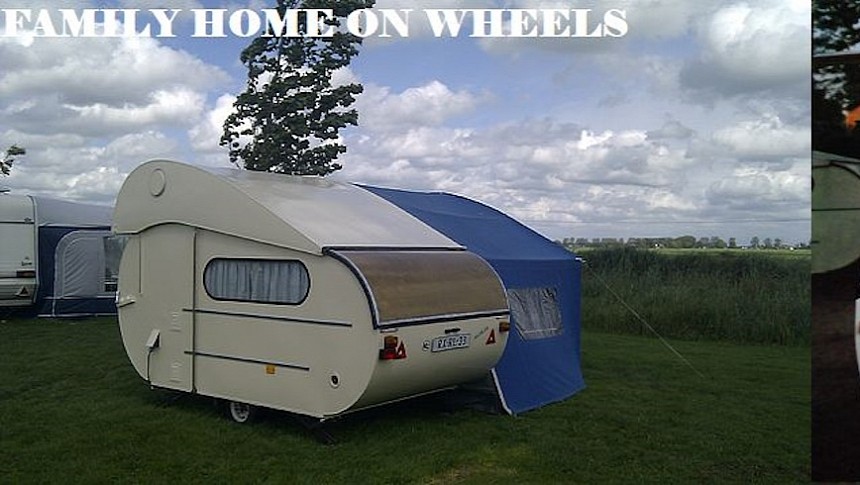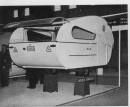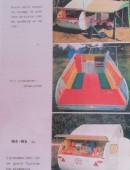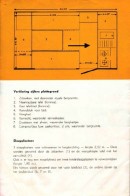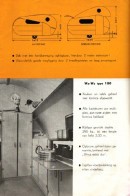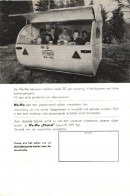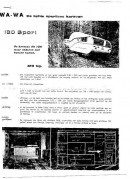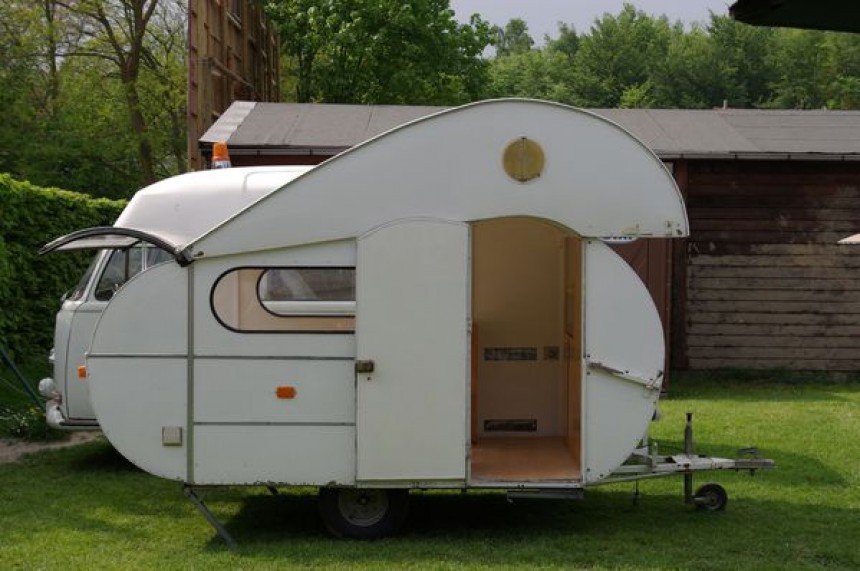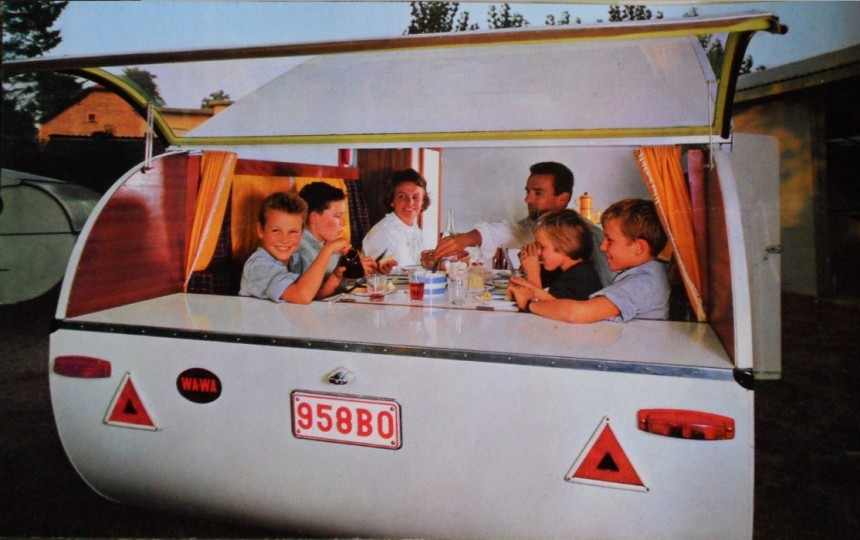Kids these days will say that unjustified nostalgia of the "things were better back in the day" kind is the tell-tale sign of getting old. We're not here to establish if that's really the case, but nostalgia is a given with this piece.
For today's walk down (the virtual) memory lane, we're looking at an icon of many decades ago, the Wa-Wa expandable caravan.
With roots going all the way to the 1930s, the Wa-Wa was a fixture at campsites all across Europe in the '50 through to the '60 decade, spanning several models of different sizes, various possible configurations, accessories, and a loyal fanbase that's still around today. Even though the Wa-Wa is not anymore.
The Wa-Wa, which you'll occasionally find spelled as WaWa, was a lightweight and compact travel trailer. You can't have a family-friendly RV, especially one that can sleep as many as six people, in the most compact form factor without considerable compromises or a smart gimmick. In the case of the Wa-Wa, the gimmick was the use of an expandable roof that allowed standing height in the kitchen at camp.
Unlike the standard pop-up roof, the Wa-Wa went for the halfway solution, which, incidentally, allowed it to use a hard roof for extra durability and comfort. In different words, the roof moved upwards on hinges in the front of the trailer, which meant standing height in the kitchen. In travel mode, the Wa-Wa had a lower profile, which reduced drag and enhanced ease of operation.
The Wa-Wa has roots in a bicycle trailer developed at the end of the 1930s by Louis Watteyne of Notre Dame au Bois, Belgium. The Wa-Wa name is a tribute to Watteyna and refers not to the structure of the trailer but to the patented rubber suspension he created for it, which would remain in use on the trailer until the mid-‘60s.
Watteya named his lightweight trailer the Wa-Wa, a small towable designed to transport a child or luggage by bike. Underneath the child seat was a small storage compartment, which turned the Wa-Wa into a popular choice with smugglers during the war.
In 1954, Louis Dombard met with Watteya and bought the suspension system from him, with the goal of implementing it on a family vacation trailer. Two years later, the first Wa-Wa came out: it was the 160 model and boasted a very compact and lightweight body, with all the creature comforts of home and sleeping berths for three people.
The Wa-Wa was the light sporty caravan, "the caravan that could go where others couldn’t," which you could tow with a small passenger car without an issue. It also offered the creature comforts of a home and standing height(-ish), so it was billed as perfect for the family vacation.
The Wa-Wa 160 was 1.6 meters wide and 3.3 meters long (5.2 x 10.8 feet) and rode on two small wheels with the Watteya rubber suspension. Height at camp was 1.84 meters (6 feet) thanks to the pop-up section of the roof over the kitchen.
The dinette at the rear converted into a bed by lowering the table, with the manufacturer boasting that the bed could sleep three people. That may very well have been the case, but one of them had to be a kid. And the two adults most definitely had to be on the slim side.
An estimated 400 units were built in the first year, and interest was so great that Wa-Wa developed a larger version of the original just two years later.
The Wa-Wa 180 became the most popular from the lineup because it had an extra 20 cm (0.6 feet) in width over the 160 and rode on twin wheels, but it was still extremely lightweight at 290 kg/640 lbs (but carried a maximum payload of 800 kg/1,764 lbs). It boasted four berths thanks to an extra cot for a kid and, later on, six.
The 180 was offered in a Standard, Luxe, and Sporty spec, but they all came with Formica countertops, a wooden frame over a tubular steel chassis, and the comforts of a home – by that era's understanding of a mobile home. Optionals included an awning that brought the dining area outside and a canvas attachment that integrated a toilet tent with or without an inner section for washing up.
Wa-Wa would further expand the original Wa-Wa model with the 200 and the 400 models before moving to units with a fixed roof like the Edelweiss, the Mistral I and II, and the Baccarat. When the Wa-Wa 200 production ended, the Watteyne suspension was abandoned.
Wa-Wa closed up shop at the start of the '70s decade amid fierce competition and mounting production costs. Today, the Wa-Wa is still around because of a very dedicated community of owners, many of whom personally restored the units they found in various states of disrepair.
Wa-Wa put out an estimated 6,000 units during its time, but we couldn't find exact numbers for each of the models on the lineup. The Wa-Wa 180 Sport seems to have been a favorite, so production was probably higher for it.
With roots going all the way to the 1930s, the Wa-Wa was a fixture at campsites all across Europe in the '50 through to the '60 decade, spanning several models of different sizes, various possible configurations, accessories, and a loyal fanbase that's still around today. Even though the Wa-Wa is not anymore.
The Wa-Wa, which you'll occasionally find spelled as WaWa, was a lightweight and compact travel trailer. You can't have a family-friendly RV, especially one that can sleep as many as six people, in the most compact form factor without considerable compromises or a smart gimmick. In the case of the Wa-Wa, the gimmick was the use of an expandable roof that allowed standing height in the kitchen at camp.
The Wa-Wa has roots in a bicycle trailer developed at the end of the 1930s by Louis Watteyne of Notre Dame au Bois, Belgium. The Wa-Wa name is a tribute to Watteyna and refers not to the structure of the trailer but to the patented rubber suspension he created for it, which would remain in use on the trailer until the mid-‘60s.
Watteya named his lightweight trailer the Wa-Wa, a small towable designed to transport a child or luggage by bike. Underneath the child seat was a small storage compartment, which turned the Wa-Wa into a popular choice with smugglers during the war.
The Wa-Wa was the light sporty caravan, "the caravan that could go where others couldn’t," which you could tow with a small passenger car without an issue. It also offered the creature comforts of a home and standing height(-ish), so it was billed as perfect for the family vacation.
The Wa-Wa 160 was 1.6 meters wide and 3.3 meters long (5.2 x 10.8 feet) and rode on two small wheels with the Watteya rubber suspension. Height at camp was 1.84 meters (6 feet) thanks to the pop-up section of the roof over the kitchen.
An estimated 400 units were built in the first year, and interest was so great that Wa-Wa developed a larger version of the original just two years later.
The Wa-Wa 180 became the most popular from the lineup because it had an extra 20 cm (0.6 feet) in width over the 160 and rode on twin wheels, but it was still extremely lightweight at 290 kg/640 lbs (but carried a maximum payload of 800 kg/1,764 lbs). It boasted four berths thanks to an extra cot for a kid and, later on, six.
Wa-Wa would further expand the original Wa-Wa model with the 200 and the 400 models before moving to units with a fixed roof like the Edelweiss, the Mistral I and II, and the Baccarat. When the Wa-Wa 200 production ended, the Watteyne suspension was abandoned.
Wa-Wa closed up shop at the start of the '70s decade amid fierce competition and mounting production costs. Today, the Wa-Wa is still around because of a very dedicated community of owners, many of whom personally restored the units they found in various states of disrepair.
Wa-Wa put out an estimated 6,000 units during its time, but we couldn't find exact numbers for each of the models on the lineup. The Wa-Wa 180 Sport seems to have been a favorite, so production was probably higher for it.
